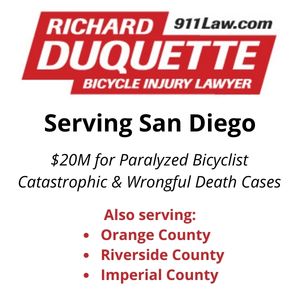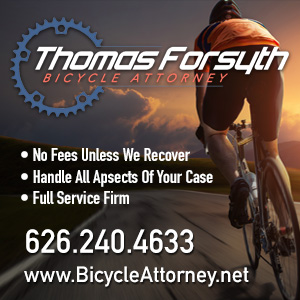For the second time since Bill Rosendahl took over as chair, the City Council’s Transportation Committee offered cyclists a highly anticipated bike-oriented session.
And once again, actually he delivered.

Left to right: Paul Koretz, Asst. Chief Paysinger, Chief Beck, Bill Rosendahl, Bernard Parks and Tom LaBonge; later joined by Richard Alarcón.
A number of cyclists, many of whom took the day off to participate, rode to the meeting on the route city employee Ed Magos was taking recently when he was run down by a driver who got out of her car, saw him writhing in pain and begging for help, then left him laying in the street as she fled the scene.
Inexplicably, she was not arrested or charged with hit-and-run after she later turned herself in at a police station; the ride was intended as a protest to call attention to the injustice cyclists have too often received when we’ve turned to the LAPD for help.
New police Chief Charlie Beck assured the riders that those days are over, saying “your voices have been heard.”
He continued by saying cyclists are the city’s most vulnerable commuters, and need the department’s support and protection. “We know we need to do a better job for you,” he said. “We will do a better job for you.”
He said that he’s asked the City Attorney to take another look at the Magos case to see if any charges can be filed. Yet as Assistant Chief Earl Paysinger noted in answering a question from local cycling leader Roadblock about his own hit-and-run case, how a case gets handled is determined by whether prosecutors believe they can “prove a case beyond a reasonable doubt.”
Though how there could be any doubt when witnesses not only saw the collision, but observed the driver leave the scene, is beyond me.
The Chief said it was the department’s job to protect those who need protecting, and the LAPD intends to do just that. As proof, he turned to the man sitting next to him, telling the assembled riders and committee members that he’s named Paysinger, second only to the chief in the department hierarchy, as the LAPD’s direct liaison to the cycling community.
Beck promised better officer training regarding bicycling, as well as shifting responsibility for traffic accidents — including bike collisions — from patrol officers to the specialized Traffic Investigation Unit. And assured riders that bike thefts will receive increased scrutiny from the department, noting that it’s one of the few crimes that has increased in recent years, “and we take that seriously.”
He also asked for patience, noting that it will take time for these changes to filter down to the rank-and-file officers on the street level. And assured cyclists that he will stay involved in the process.
“Don’t just listen to what I say,” he said, “but watch what I do.”
That lead to comments from a long line of cyclists, many of whom addressed the problem of drivers who flee, and getting the police to take these crimes seriously.
“It’s difficult to get a license number and see the face of the driver,” said Danny Jimenez, “especially if you get hit from behind.”
Like a number of others, Will Campbell noted that he took the day off because he was outraged over the Magos case, while Stephen Box gave the chief a copy of the Cyclists’ Bill of Rights. The LACBC’s Aurisha Smolarski offered hard-hitting comments about the need to reform department policies, with Rosendahl allowing her to go well over the allotted one-minute time limit. Amanda Lipsey said that as a professional ballet dancer, she couldn’t afford to suffer an injury due to a careless driver who wouldn’t stick around to take responsibility.
L.A. cyclists also received surprising support from an entirely unexpected quarter, as Hamid Khan, spokesman for the Los Angeles Taxi Workers Alliance, voiced approval for the new bike plan and the need to protect cyclists.
When the Mayor and the head of LADOT, the police chief and cab drivers all support for cyclists, you know something has changed.
Meanwhile, I commented about the need to improve training for police accident investigators to give them a better understanding of bike accidents — something that’s been a problem for police departments around the country. And handed Beck a copy of two articles from the International Police Mountain Bike Association that explained how to investigate cycling accidents, which he promised to read.
Due to the late start of the meeting, Chief Beck had to leave during the comments, and turned the session over to Asst. Chief Paysinger, who quickly voiced his support for cyclists.
“Before my knees went bad, I was a rather avid cyclist myself,” he said.
He added that when he was a division chief — with Chief Beck serving beneath him — there were less than 100 bike officers on the force; now over 500 officers have received bike training. “Young cops love it,” he explained, since it gets them out of their cars, gives them a chance interact with people, and lets them exercise while working.
In other words, pretty much the same reasons the rest of us do.
CD5 Council Member Paul Koretz related a story of watching a hit-and-run incident in which a driver parked illegally in order to use an ATM. When a parking enforcement officer stopped to write a ticket, the driver jumped back in his car and took off, running over both of the parking officer’s legs in the process — but leaving his ATM card behind. Sure enough, the driver eventually came back for his card.
And wasn’t charged with hit-and-run since he returned to the scene.
He added that he doesn’t think bike and pedestrian incidents are taken seriously enough by the LAPD. To which Paysinger responded, “I can’t speak to the past. But we’re here today to show that things have changed.” Better investigations, he suggested, would lead to better prosecutions.
District 7 Councilmember Richard Alarcón told how he had been the first to arrive after a cycling accident, finding a rider laying unconscious in the road. After the cyclist had been taken away by ambulance, he asked the police officers what they were going to do with the bike, adding that they seemed confused, but took the bike — most likely because a councilman had asked them to.
Paysinger said the policy was to find someone on the scene who could take custody of the bike, or call a friend or relative of the victim to come get it. Failing that, the officers would impound the bike and release it later to the victim or someone the victim designates; the police should never leave the bike behind, he said.
There was one testy exchange when a rider complained about a recent incident when an officer stopped him for riding too slowly, telling him “If you want to ride like that, go to Culver City.” He said he had filed a complaint, but received a response denying that the incident had taken place. Paysinger said to give him a copy of the letter, and he would look into it personally.
As the meeting was winding down, Chief Paysinger responded to a comment from Roadblock by suggesting that state law may need to be changed to increase penalties for hit-and-run.
With that, I got up and asked that the council request the City Attorney to work with cyclists in drafting a bill that could be taken to the state legislature. And added that penalties should include automatic revocation of the drivers license for anyone who flees the scene of a collision, and seizure of the vehicle involved upon conviction.
After all, drivers can currently have their cars seized if they’re used for drug crimes, drunk driving or cruising for prostitutes. So why shouldn’t it be taken if the car is actually used in the commission of a crime, as in a hit-and-run?
Rosendahl responded by offering a resolution asking the City Attorney to look into drafting a bill, which Koretz quickly seconded.
So it’s a start.
A first step in drafting a new, tougher hit-and-run law.
And a new, and hopefully better, day in dealing with the LAPD.
My apologies to those who spoke at the meeting; I was drawn into other conversations during the comment period, and wasn’t able to write down everyone’s comments. However, you can read more about the ride and meeting, as well as comments from a number of riders, in stories from the L.A. Times, LA Streetsblog and the LACBC.
……….
On a related note, proof that it’s not just the Chief and Asst. Chief who support cycling on the LAPD.
The general public is invited to take part in the upcoming March 13 Ride to Arrest Cancer, benefitting the Los Angeles Police Cancer Support Group. The ride offers routes of 15, 25 and 50 miles, starting at the Valley Traffic Division at the Plant in Panorama City, and visiting various police stations throughout the Valley. Preregistration cost is just $25 for adults ($30 day of the ride) and $15 for kids under 12, and includes BBQ, a T-Shirt and official police escort.
The LAPCSG exists to benefit “members of the law enforcement community who are living with cancer, cancer survivors, family members, friends, or caregivers.” As someone who has lost friends and family to the disease, I can’t think of a better cause.
……….
I’ll have today’s links later in the day — it’s a nice day, and I’ve gotta ride.









